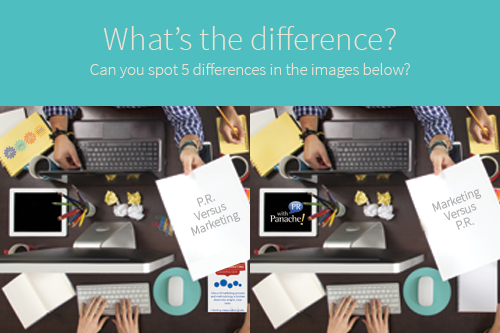
By: Jacob Hanson
As a full-service PR and marketing firm serving the education and ed tech marketplaces, this is a question we grapple with on a regular basis. While there are stark differences between the two that we need to keep in mind, we should also look at a few very important commonalities.

Commonality: Creating content for either marketing or PR starts with knowing your audience.
Whether you are looking to secure a feature story in a prominent ed tech publication or creating the next awesome piece of content to gate on your site, think of your readers. What will resonate with them? Is the core value proposed in your piece adaptable to your readers’ situation? Why will a stranger find this compelling enough to act on?
Difference: Thought leadership should take center stage in PR content.
This seems obvious, but it really isn’t. True thought leadership is rarely, if ever, attached to a product or solution. Forbes recently published a fantastic article on this very topic, “Why Self-Promotion Endangers your Brand and How to Avoid It.” The knowledge, expertise, or personal experiences that you share in your PR content is what will help readers overcome a challenge or improve their lives. Connecting that value to your brand will prompt them to look for more from you.
Don’t get me wrong: there are plenty of opportunities to include product mentions in PR, as well as thought leadership in marketing content, but giving product information a comfy home on your website and in appropriate marketing collateral will allow you to utilize hard-earned PR opportunities to showcase your company’s thought leadership.
Commonality: Both marketing and PR serve as effective “top-of-the-funnel” content that should be shared.
The ultimate goal behind any effective PR strategy is to generate awareness of your brand. When you are generating awareness, you are generally trying to reach those who have never heard of you. You only get one shot at making a first impression—what do you want yours to be? Do you want to be remembered as the company that loves to plug their products, or the one that was truly helpful and insightful and, in turn, memorable?
Top-of-the-funnel marketing content can serve this same purpose if disseminated effectively through social channels, blogs, and email. Top-of-the-funnel prospects may still be trying to figure out if they even have a problem or may be just beginning to search for options to solve a problem. They are looking for advice and help. If your content provides your prospects what they need and meets them where they look for information, you will create the best opportunity to draw them in and steer their buyer’s journey in your direction.
Difference: Editors don’t like marketing content; that’s why they have ad salespeople.
If you want to erode a relationship with an editor, submitting marketing content masked as PR or editorial is a great start. Before you get anywhere near hitting “send,” pay attention to what type of content the publication publishes, as that is your absolute best indicator of what their readers are accustomed to and what their editors will accept for publication. If your article performs well for the publication (and for you, of course) the editor will more than likely be open to future ideas and stories.
There are a finite number of publications that specialize in education, while you have a vast number of channels through which to share marketing content. Don’t burn a bridge with an editor by confusing marketing and editorial content.
Thanks for sharing!
PRP Group, a Hawke Media Company, is an award-winning full-service education PR and marketing firm serving the pre-K–12 and higher-ed community.